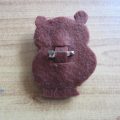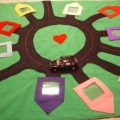In order to make such a panda, you canuse any unkempt wool. For our master class, the material is perfect: "Dandruff" (white) or "Austrian Merino" from Germany (black). They can be used for both dry and wet felting. To save expensive wool, inside the head and trunk of the panda we insert pieces of synthetics. 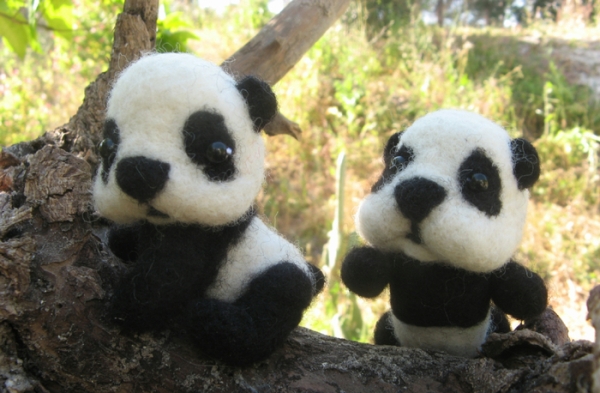 Necessary materials:
Necessary materials:
- wool black and white for dry felting;
- sintepon;
- needles for felting No. 38 and No. 40;
- Reverse needle, which gives fluffiness;
- sponge size of more than 10x10 cm;
- beads-eyes;
- long tailor's needle;
- thread number 10;
- safety pins.
We make a toy head
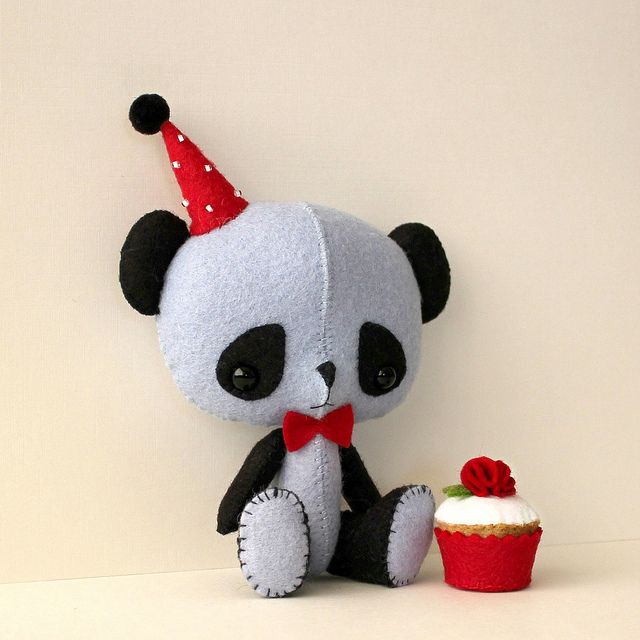

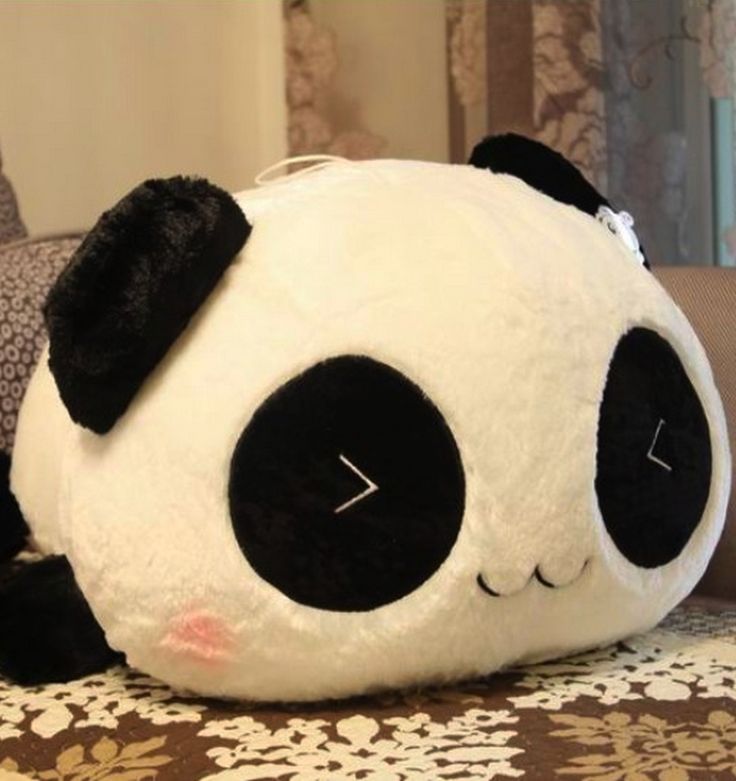
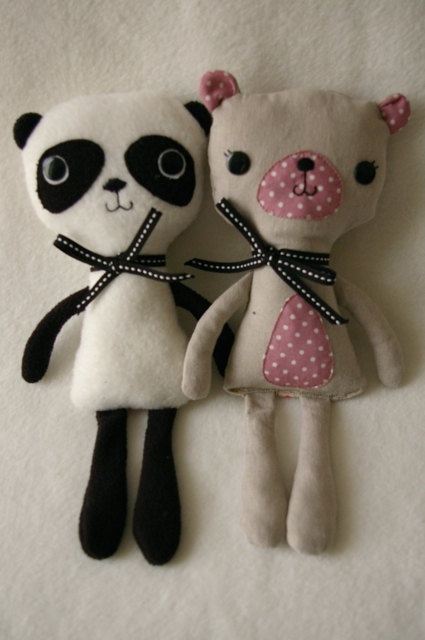


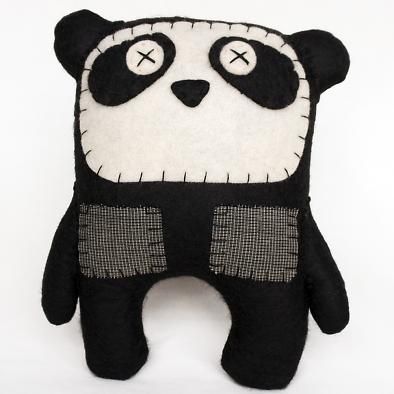
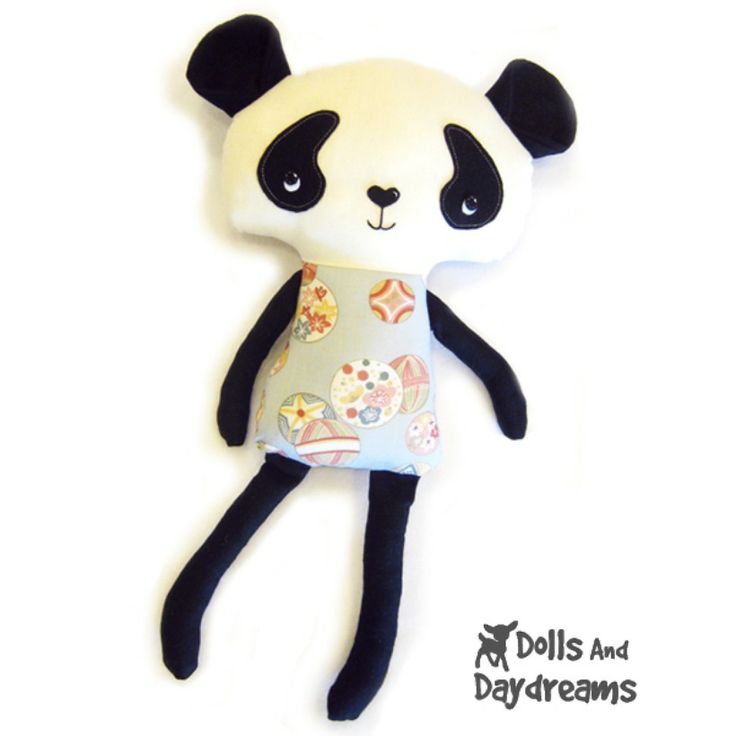


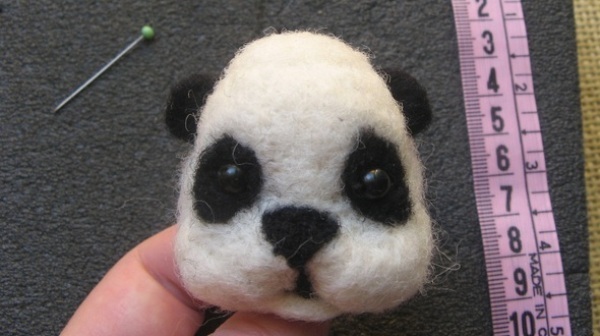
Take a small piece of sintepon and twist outIt has a dense ball about 5-6 cm in diameter. So that it does not fall apart and is a reliable base for the panda head's fur coat, gently sew it with a long needle with a white thread, tightening each stitch and reducing the sintepon to a diameter of 4 cm.
We drop the sewn sintepon ball with wool,white color. To do this, it is necessary to tear off a small bundle, put it on the ball and tuck into it with a needle No. 40 for felling many times to a depth of about 5-8 mm. Try to poke evenly over the entire surface and perpendicular to the surface.
Periodically check the dimensions. Apply layer by layer until the diameter of the head is about 5 cm.
We tear off a piece of material and form the cheeks of our toy on the sponge from it. To do this, use a smaller needle. We make a small sausage 3-4 cm long and 1.5-2 cm thick.
We put formed cheeks to the muzzletoys. In order not to see a sharp transition, tear off a little wool, overlap the slot and fasten it, poking a thin needle. In the lower part of the cheeks, make a groove across to the future spout.
Now you can form eye pits. There is such an important rule in the master class - the more you poke a needle in the same place, the denser the coat, and, consequently, the dimple gets deeper. So we made two holes for the eyes.
We take quite a bit of black wool and lay ither there, neatly lapping a thin needle. We sew beads of eyes, like a button. To do this, pass a needle with a strong thread from the nape of the neck to the very middle of the eye socket, string the bead of the eye and return to the back of the head, tying the thread. The second eye is also sewn.
Remember that now you are making the character of your toy. This requires not only a master class, but also an artistic flair. We make the lower lip, forming it, twisting it on a thick needle.
We put a thin needle on the lip to the toy's muzzle.
We form on the rug separately three smallspool. One of them is attached to the place of the nose, at the same time we make a thin strip to the lips. It can be twisted from a piece of black hair, gently attaching a thin needle in the slot above the lip.
Pull the ears of the spool, which was made earlier from the wool of black color. Everything, the master class for making the head of our beast is ready.
Picking up a toy
One head, of course, is not enough. We do not make a kolobok in the class. We still need to make a trunk with four legs. 

We repeat all the same operations that were done at the beginning, when the head was made. Sew a short dense sausage of 6-7 cm and a diameter of 3 cm from the sintepon.
We drop it first from below with white hair, then from above we make a black breast. From the side where the head will be fastened, the master leaves the hair untouched.
We attach the head to the trunk with a needle for felting No. 40.
We tear off four pieces of dark material forpaws, we form them separately on a sponge, periodically trying on, applying them to the torso. The two upper paws should be 1 cm in diameter and 3 cm in length, the hind legs slightly curved in the middle 4 cm long.
Attach the limbs of the panda to the body. You can still make a small black tail. Everything, the master class is complete.
Red panda
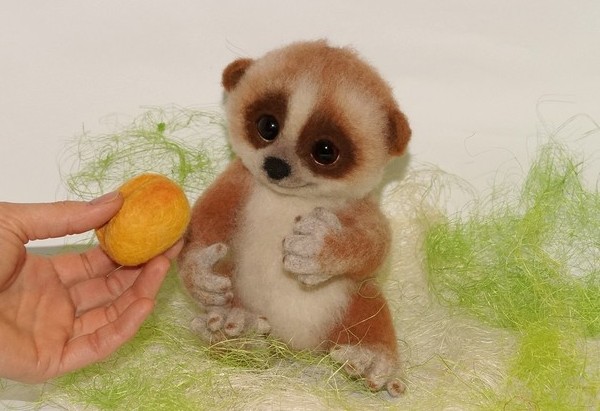 Having learned to perform basic operations, having receivedthe initial practical skills of the master class, you can slightly complicate the task and make a tricolor charming panda - a friend of our first bear cub. For it you need to buy a good coat of three colors: white, black and light brown and a set of special needles for felting. For a smooth transition of colors, you need to poke the thinnest needle into the joints of the wool a little at an angle and shallow to confuse the multicolored threads. You have to learn how to make complex color transitions. Everything else is done exactly the same, but more accurate and painstaking. For example, small toes on the paws - this is a very difficult detail of a pretty bear, which only a high-end master can perform.
Having learned to perform basic operations, having receivedthe initial practical skills of the master class, you can slightly complicate the task and make a tricolor charming panda - a friend of our first bear cub. For it you need to buy a good coat of three colors: white, black and light brown and a set of special needles for felting. For a smooth transition of colors, you need to poke the thinnest needle into the joints of the wool a little at an angle and shallow to confuse the multicolored threads. You have to learn how to make complex color transitions. Everything else is done exactly the same, but more accurate and painstaking. For example, small toes on the paws - this is a very difficult detail of a pretty bear, which only a high-end master can perform.
Comments
comments

 Necessary materials:
Necessary materials:












 Having learned to perform basic operations, having receivedthe initial practical skills of the master class, you can slightly complicate the task and make a tricolor charming panda - a friend of our first bear cub. For it you need to buy a good coat of three colors: white, black and light brown and a set of special needles for felting. For a smooth transition of colors, you need to poke the thinnest needle into the joints of the wool a little at an angle and shallow to confuse the multicolored threads. You have to learn how to make complex color transitions. Everything else is done exactly the same, but more accurate and painstaking. For example, small toes on the paws - this is a very difficult detail of a pretty bear, which only a high-end master can perform.
Having learned to perform basic operations, having receivedthe initial practical skills of the master class, you can slightly complicate the task and make a tricolor charming panda - a friend of our first bear cub. For it you need to buy a good coat of three colors: white, black and light brown and a set of special needles for felting. For a smooth transition of colors, you need to poke the thinnest needle into the joints of the wool a little at an angle and shallow to confuse the multicolored threads. You have to learn how to make complex color transitions. Everything else is done exactly the same, but more accurate and painstaking. For example, small toes on the paws - this is a very difficult detail of a pretty bear, which only a high-end master can perform.

